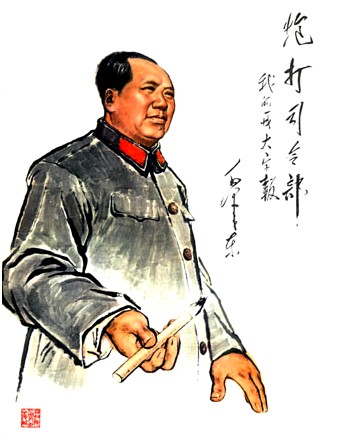
Calligraphy has continued to be a powerful pressure in Chinese existence to the present. Throughout the Song, Yuan, Ming, and Qing dynasties, calligraphy ongoing to become a central art from the literati, carefully connected both with painting along with the social and cultural existence from the educated elite. China landscape found reflect the appreciation of calligraphy, as gemstones inscribed using the calligraphy of respected artists were erected at famous sites. Calligraphy may be seen on temple name plaques, on shop signs, as well as on couplets pasted through the doorways of even very modest homes. Calligraphy, thus, created a constantly-present a part of China’s visual culture.
Painting of Mao Zedong wielding the comb to create the “large character poster” that launched the cultural revolution: “Bombard the Headquarters” source
Throughout the last century, the social and political purposes of calligraphy happen to be significantly altered. Calligraphy is not a skill connected mainly using the traditional scholarly elite. Not just has calligraphy been employed like a tool of revolution, but it is a well known amateur art used by people of walks of existence, and artists have discovered uses of it to challenge traditions instead of perpetuate them.
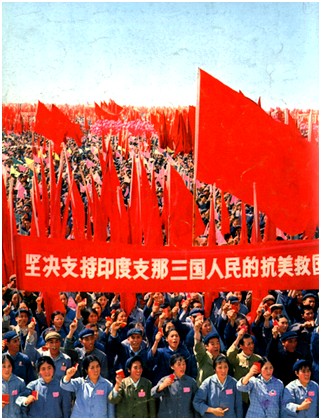
Under Mao, words were frequently seen in the pub shown on banners or signs with revolutionary slogans. More often than not, the design and style employed for revolutionary slogans was bold and block-like, without any resemblance to calligraphy created by way of the comb.
At workplaces, as seen below, prominent signs advised workers to sustain their revolutionary ardor.
How can you think the most popular sight of slogans such as these would shape how people seen calligraphy completed with a brush?
1969 rally advocating resistant against American imperialism source
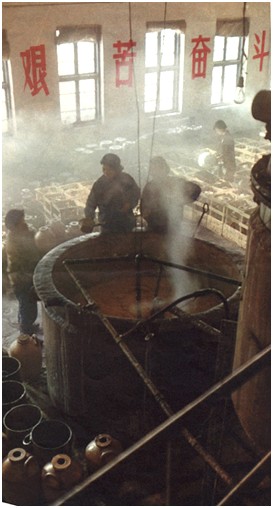
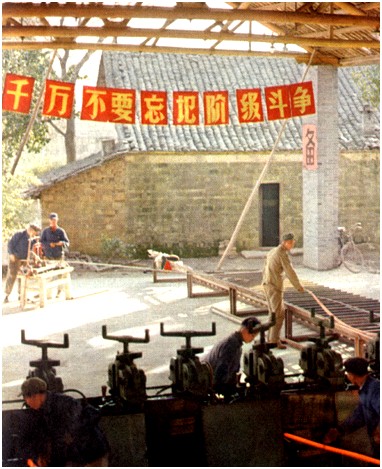
Workshop decorated with banner proclaiming “Under no conditions forget class struggle!” source
The figures on your wall from the Kirin Municipal Oil and Grease Plant urge “arduous struggle” in 1970 source
Even when block-like calligraphy had revolutionary overtones, Mao along with other leading revolutionaries authored in styles much nearer to traditional calligraphy. Furthermore, despite many people required up writing with pencils and ball-point pens, leading party people ongoing to complete calligraphy with traditional brushes. They’d hand out bits of their calligraphy and permitted their calligraphy to become broadly displayed.
Mao was not just a calligrapher, but additionally a poet. Here is part one of the poem he authored as a result of a poem delivered to him through the literary figure, Guo Moruo. The poem extols revolutionary action, but uses traditional poetic forms.
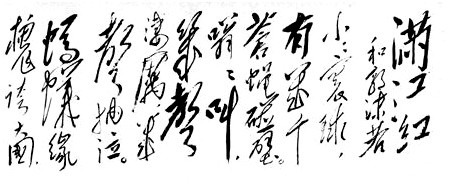
Mao’s poem, “Answer Guo Moruo, towards the tune of individual jiang hong” source
For other political leaders’ calligraphy, click the link.
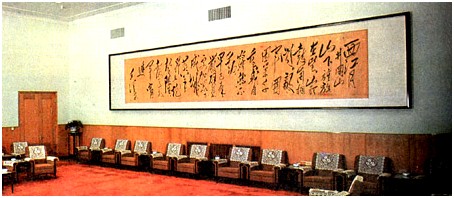 Mao Zedong’s calligraphy was more broadly displayed compared to every other leader. The poem proven above can be used, at right, to brighten the memorial hall focused on Mao the next year his dying.
Mao Zedong’s calligraphy was more broadly displayed compared to every other leader. The poem proven above can be used, at right, to brighten the memorial hall focused on Mao the next year his dying.
Mao’s calligraphy within the Mao Mausoleum source
Leaders, starting with Mao, but ongoing to the current, loved to become photographed doing calligraphy or making gifts from it.
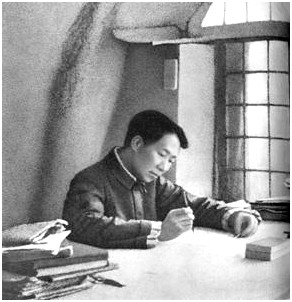
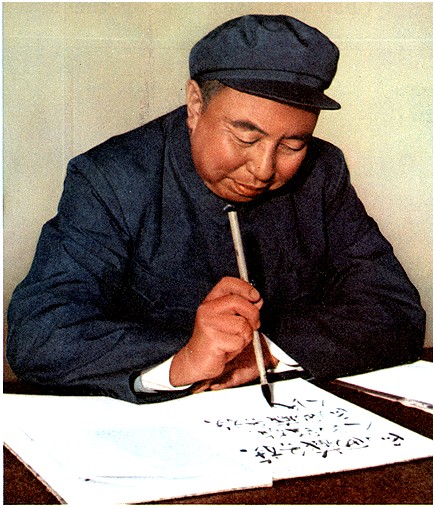
Mao writing within the 1940s source
Hua Guofeng writing in 4 decades ago source
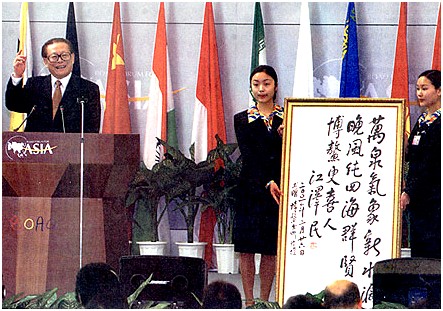
In 2001 China’s premier Jiang Zemin had themself photographed conferring an inscription in the own calligraphy to some society he desired to support.
What is your opinion a political leader needs to profit from publication of the picture such as this?
Jiang Zemin presenting his calligraphy to some society in 2001 source
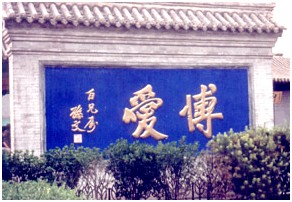
One may also still see calligraphy by earlier political leaders in China today. This inscription proclaiming the Confucian virtue of broad love is incorporated in the hands of Sun Yat-sen.
Inscription by Sun Yat-sen in Shanxi province source
There’s still work today for calligraphers along with a substantial marketplace for calligraphy scrolls created within the traditional manner. Many art schools are in possession of professors of calligraphy training calligrapher-artists. Significantly less well compensated are calligraphers who produce calligraphy for signs and door frames. Nonetheless, this type of calligraphy continues to create a significant a part of everyday visual culture.
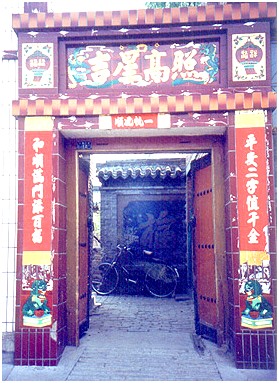
The doorway for this house hasn’t just the character for “benefits” reduce the brick (visible behind the bicycle) along with a four character phrase over the entrance but additionally two temporary paper strips on each side from the door. The saying over the top reads “auspicious stars shine on high.” The paper strip hanging lower the best side reads “The 2 figures ‘peace’ and ‘calm’ count a 1000 in gold.” The main one around the left reads “When harmony and behavior training fill the house it adds 100 benefits.”
Do you consider whomever set up these figures thought about their calligraphy? When the auspicious meanings were legibly symbolized, would which have been enough?
Entrance, Shanxi province, 2001 source
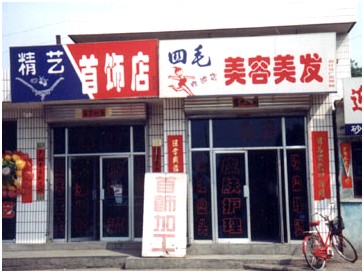
Do a few of the figures on these store signs appear more calligraphic than the others? Are they all different?
Cosmetics shop, Shanxi 2001 source
Calligraphy today is used by countless Chinese. Almost all of practitioners are amateurs who find pleasure or artistic fulfillment in perfecting their script. But the amount of professional calligraphers or calligrapher-artists can also be substantial.
Source: depts.washington.edu